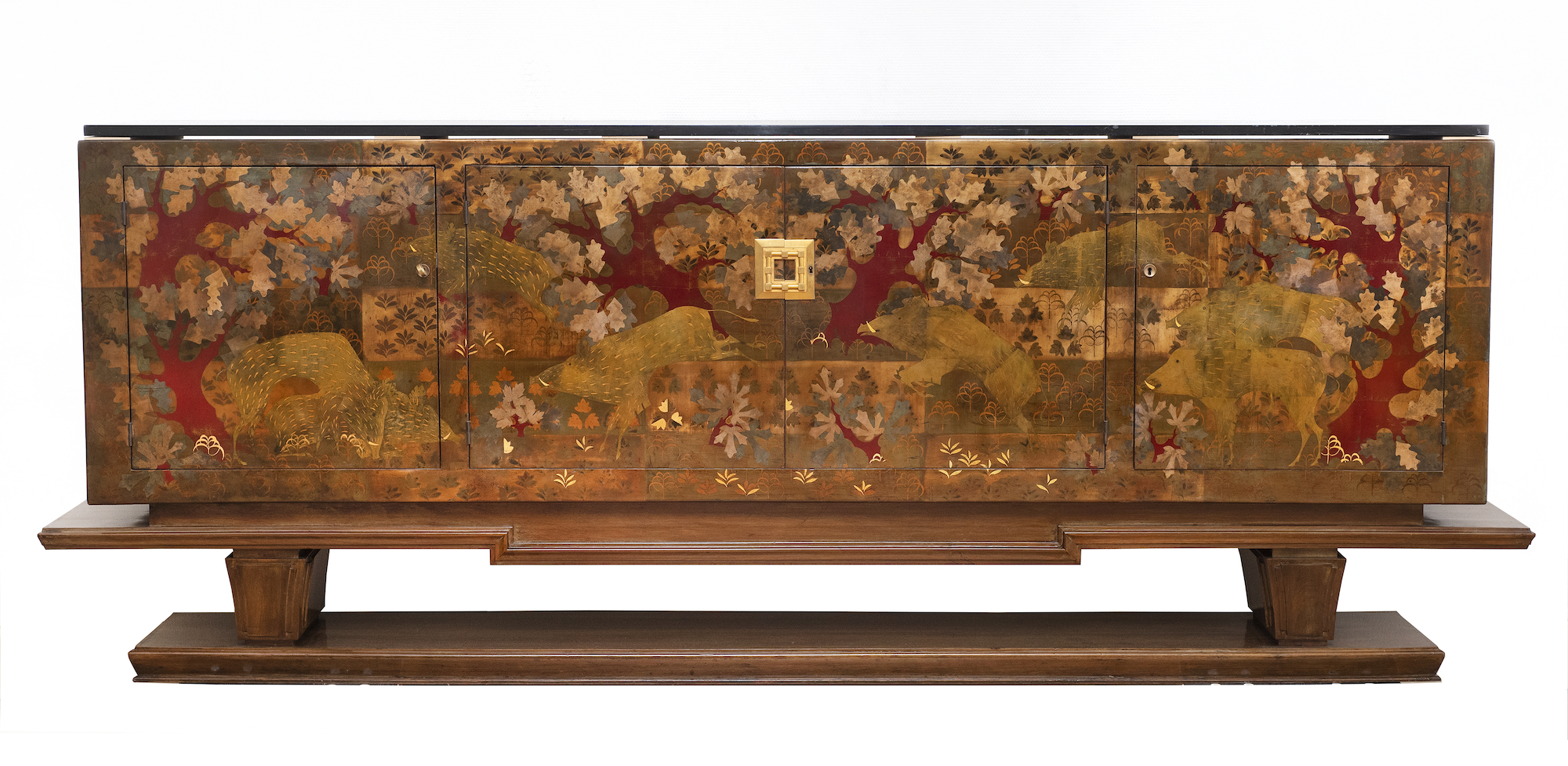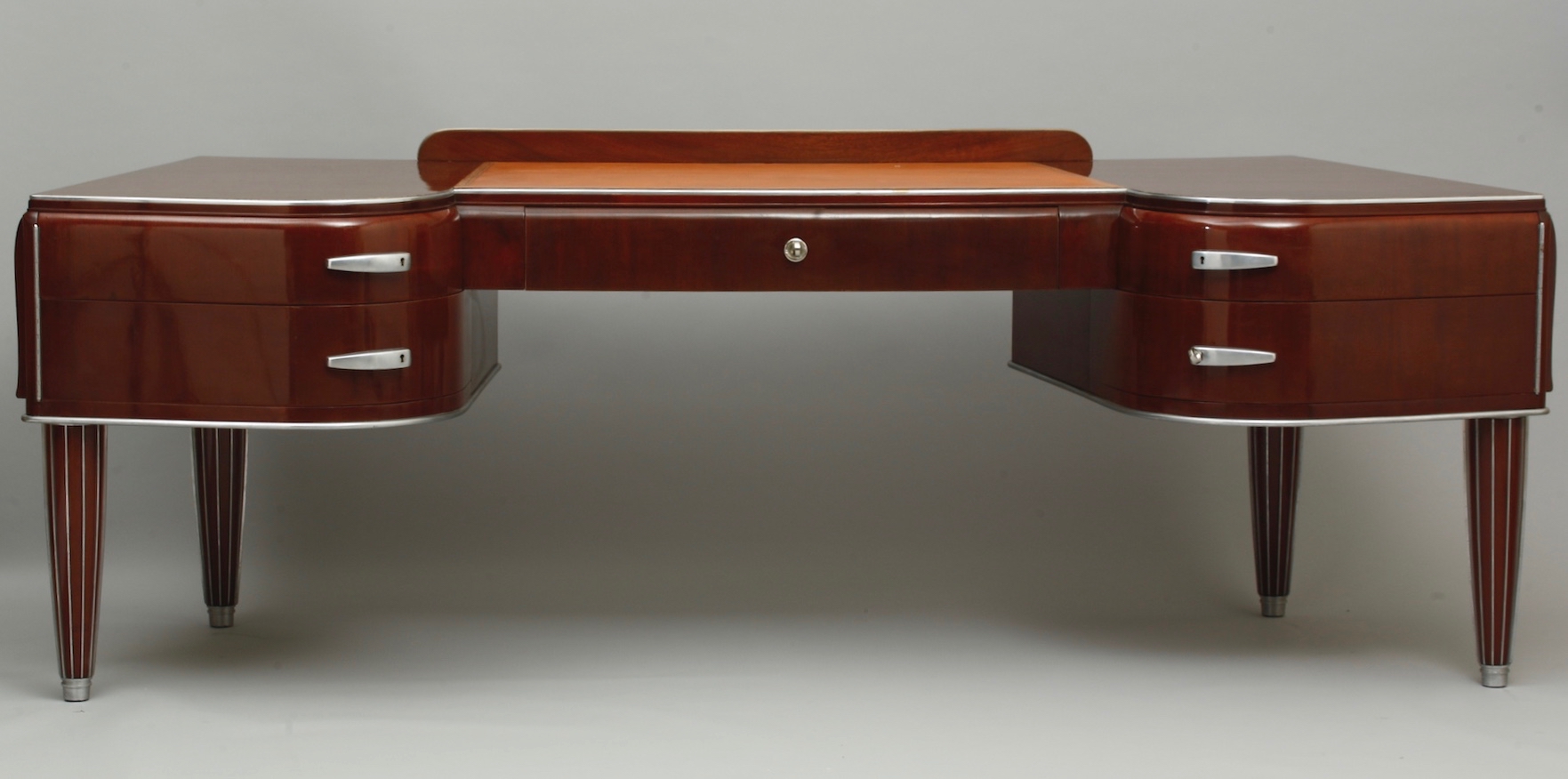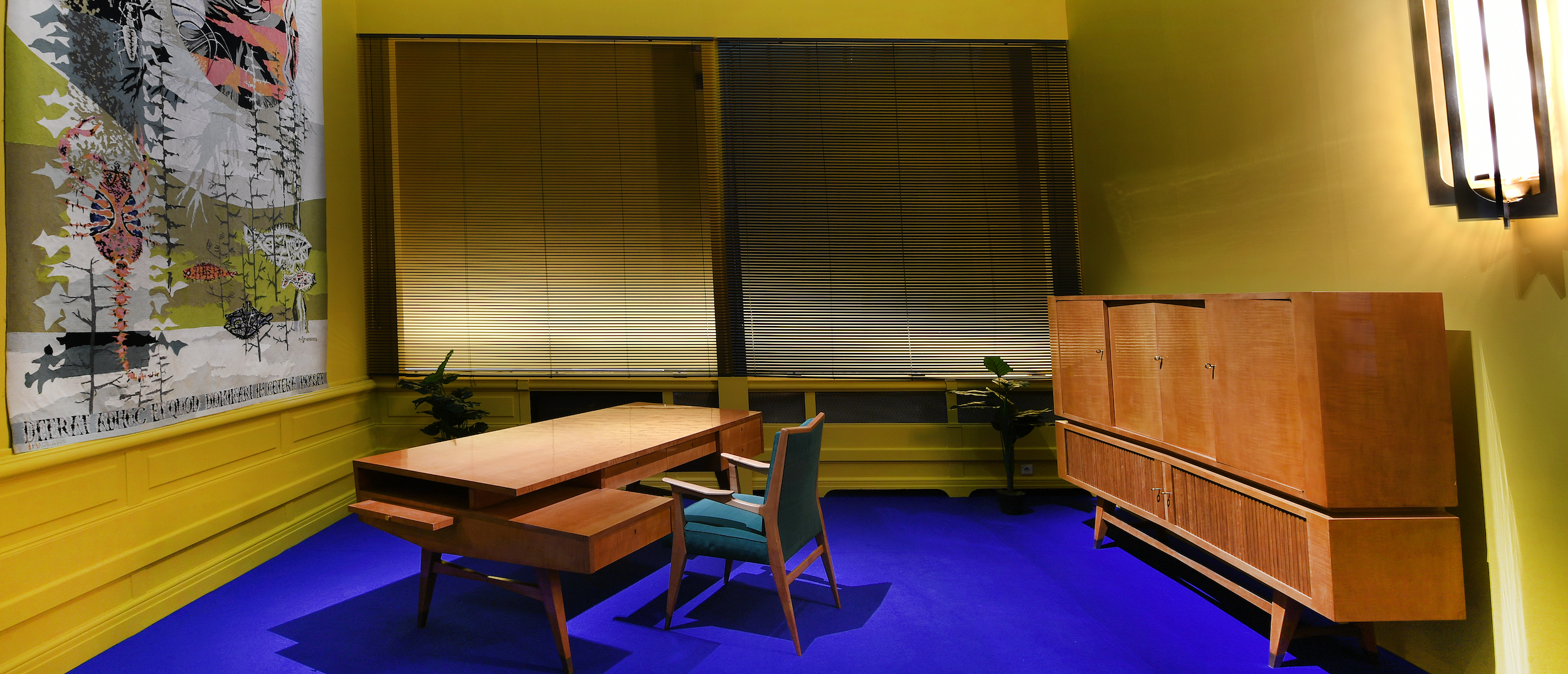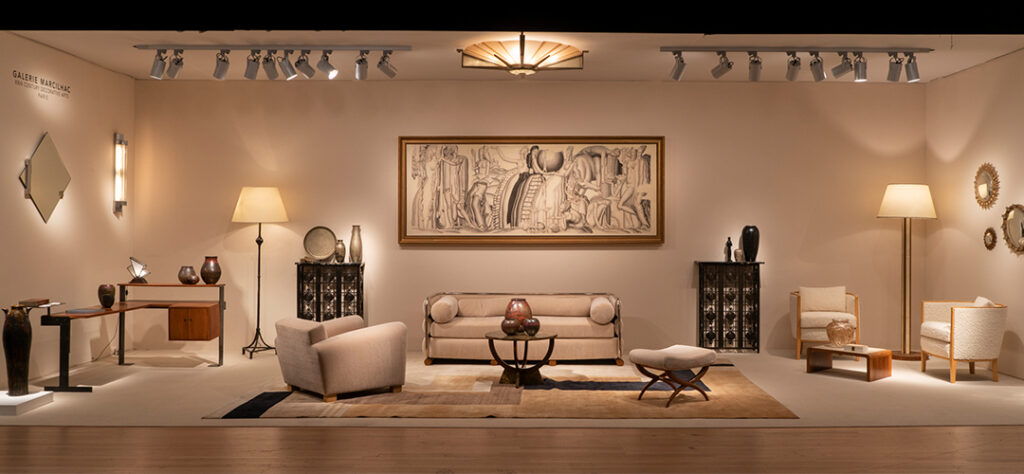Effect Magazine’s Clare Dowdy explores the forgotten vaults of the French Culture Ministry and visits Le chic! Arts décoratifs et mobilier de 1930 à 1960, where some of its 20th-century design treasures are on display for the first time in decades.
In a big, windowless, high-ceilinged room in central Paris, hundreds of chairs, sofas, desks and tables swathed in sheets of thick transparent plastic are stacked up chronologically along the walls. This is just one location for the 130,000 pieces of furniture and textiles that the ministry has in storage, some of them dating back to 1825.
When they’re not squirrelled away, these items are brought out to furnish presidential residences, French embassies and the offices of government ministers. Soft power, in modern parlance.

It’s all in the hands of Mobilier National (MN), the state furniture collection, which is attached to the Culture Ministry. MN started out in the 17th century as the Royal Furniture Store. “It’s a very French entity,” says MN curator Emmanuelle Federspiel, “to preserve, collect and commission pieces.”
It works like this: government ministers apply to MN to change their office furnishings; they can express preferences about style or designers, and the MN teams then propose different pieces of furniture.

Mobilier National and the store mentioned above are based in the famous Gobelins tapestry factory complex, which supplied the court of the French monarchs from the time of Louis XIV. The complex and the neighbourhood take their name from the Gobelins brothers, who in the 15th century established their dye works nearby. The institution has seven restoration workshops for tapestries, carpets, upholstery, carpentry for chairs, cabinet-making and chandeliers-bronzes.
Until the end of January 2023, MN’s attention is focused on a mere thirty-year period in its illustrious history. In the Galerie des Gobelins, a small, lesser known but fascinating part of the collection is enjoying the limelight.
Le Chic! French Decorative Arts from 1930 to 1960 features sumptuous creations commissioned by MN from the likes of André Arbus, André Devèche, Colette Guéden, Paul Follot, Georges de Bardyère, Raphaël Faffel, Janette Laverrière and Jules Leleu. From the state rooms of the Elysée Palace and the Belgrade embassy to the Minister of Agriculture’s executive office, the flavour was Art Deco extraordinaire: beautiful, unashamedly luxurious and made with precious materials.
Le Chic! is designed by maximalist dandy, Vincent Darré, who has created extravagant, colourful room sets. Around 129 items on display were restored by more than 50 French craftspeople, aided by a €1m, two-year government support scheme during the pandemic.



“The challenge is to help visitors rediscover these major figures, as some of them have been overlooked,” says Federspiel. That they are overlooked is because the modernists came hot on their heels – those influential members of the French Union of Modern Artists (UAM) like Jean Prouvé, Eileen Gray and Charlotte Perriand, who eclipsed Art Deco with their utilitarian furniture in simpler shapes.
How did the times shape French Art Deco? Until the mid-1920s, MN had been resting on its Ancien Régime or imperial laurels, almost totally ignoring the arrival of Art Nouveau at the end of the 19th century.
But Guillaume Janneau changed all that. As head of MN from 1926 to 1944, Janneau (formerly an art critic) had a passion for contemporary design. He set out to revive the tradition of the Royal Wardrobe: making it representative of modernity and an expression of the decorative arts. A wind of novelty blew through the institution, and the first Art Deco pieces entered the national collections. Entering centre stage were pieces with simplified geometry, more sober lines and plainer decoration, made of local as well as tropical woods, like the 1933 amboyna burl wood desk by Georges Bardyère.

Art Deco was then given a boost through the 1937 International Exposition of Art and Technology in Modern Life. This was Paris’ seventh and last such exhibition, comprising 44 nations, 31 million visitors, and 300 palaces and pavilions erected along the Seine. Here, France could trumpet its luxury industries like haute couture, jewellery and decorators’ art. Hence Paul Follot’s desk (below) with its references to the automotive industry, in Cuban mahogany, Moroccan leather and white chromed metal. And hence the sleek domestic lighting from manufacturers including Perzel, Renon, and P Genet & L Michon.
Despite (or because of) the economic crisis brought on by WWII, the state supported the luxury sector. Funds were made available to buy ‘signature’ pieces by fashionable decorators such as self-taught French cabinetmaker Eugène Printz and Jacques Adnet, who was known for using leather. During the Occupation, a lot of furniture was ordered from the Parisian workshops. This meant their staff avoided the service du travail obligatoire (compulsory labour service), which saw hundreds of thousands of French workers deported to Nazi Germany to work as forced labour for the war effort there.


The economy took off after liberation and with the advent of the French Fourth Republic, which ran until 1958, during which the nation’s social institutions and industry were rebuilt. Mobilier National fulfilled numerous orders for presidential residences and new administrations, commissioning Arbus, Gilbert Poillerat, Leleu, Marc Du Plantier, Charles Adnet, Guéden, Louis Sognot, among others. Arbus’ eight-legged desk (above) for director Jacques Jaujard at the hotel Kinsky is inspired by the Louis XIV style and was a product of this era.
As first president of the Fourth Republic in 1947, Vincent Auriol played a key role in France’s accumulation of Art Deco. He instigated the renovation of the 1722 Elysée Palace – the president’s official residence. MN’s task at this time was to introduce modernity while preserving the theatricality felt necessary to represent political power.
Come the 1950s, the design mood changed with the rise of consumerism and the modern office. The idea of the great decoration programme began to fade: “Now there were interchangeable pieces, rather than a single, coherent assembly,” explains Federspiel. “The idea was no longer about creating furniture for the whole room – it went from decorator to designer.”



More fashionable types, like Janette Laverrière, the Swiss-French interior designer, artist and political activist, were brought on board. Or Marc du Plantier, who made pieces for the new French Embassy in Ottawa. As for hoarding, stored items that have long been unused and have lost their patrimonial character are sometimes sold. Imagine if, one day, Art Deco fell into this category…
Le chic! Arts décoratifs et mobilier de 1930 à 1960 runs until February 19, 2023 at 42 Avenue des Gobelins, 75013 Paris, France





